New ground artillery weapons
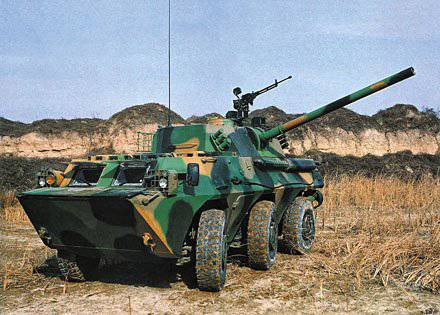
One of the reasons for the resumption of work on the 1960-mm self-propelled mortar in the middle of the 120-s was the expansion of the range of tasks facing the Airborne Forces. So, plans were developed to anticipate the landing of our airborne grouping in the "Palatinate Triangle" (the territory of the Federal Republic of Germany at the junction of the borders with France and the Netherlands). It was in this area that the armament of all American divisions deployed in the European theater of operations during the "threatened period" was stored.
But in this case, our airborne troops could face opposition from two or even three divisions of the Bundeswehr "second stage". Therefore, it became obvious that the ground striking force of the airborne division on the BMD should be of the same order as the striking force of the motorized rifle division on the BMP.
The Soviet Airborne Forces had self-propelled 85-mm ASU-85, as well as towed guns - the X-NUMX-mm cannon D-85 and the 48-mm howitzer D-122. But the firepower of the ACS-30 was already insufficient, and the speed of the towed artillery column is almost 85 times less than the ACS columns on the tracked course.
Therefore, in 1965, the VNII-100 developed two options for installing an 120-mm mortar with ballistics and M-120 mortar ammunition.
In the first version, the mortar was installed in the combat vehicle on the chassis of the MT-LB tractor (“6 object”). M-120 mortar on a standard carriage was placed in the stern of the combat vehicle. Loading the mortar was made from the barrel. Vertical mortar pointing angle from + 45 ° to + 80 °; horizontal pointing angle 40 °. Ammunition - 64 mines. Rate of fire to 10 fps. / Min. Additional weapons: 7,62-mm PKT machine gun. Crew 5 man.
In the second version 120-mm breech-loading mortar with a revolving min feed (drum capacity - 6 min) was used. The mortar was located in the turret and turret section of the BMP-1 (“765 object”). The combat weight of the mortar was to be 12,34 t. The angle of vertical guidance of the mortar is from + 35 ° to + 80 °; horizontal pointing angle 360 °. Ammunition - 80 min. Additional weapons: 7,62-mm PKT machine gun. Crew 5 man.
Both options VNII-100 remained on paper.
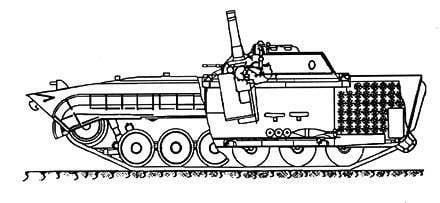
13 September 1969 was commissioned by the Commission for Military-Industrial Issues (ERW) under the USSR Council of Ministers to the Ministry of Chemical Industry and Chemical Technologies (the Company X-4882) to develop a project for two self-propelled X-NUMX mm mortars with ballistics M-120.
The swinging part of both mortars was designed according to the scheme with a barrel recoil, with wheel chocks and with a longitudinal sliding piston gate. The mortar had a hydropneumatic rammer that operated at the expense of the energy of a hydropneumatic accumulator charging when it charged. Mortars could shoot all regular 120-mm mines, as well as a new active-reactive mine (AWP).
The first version of the 120-mm self-propelled mortar was named Astra and the 2 С8 index; the second is the name "Lily of the Valley." "Astra" was intended for the ground forces, and "Lily of the valley" - for the airborne troops.
Mortar "Astra" was created on the chassis of the serial 122-mm self-propelled howitzer 2 С1 "Carnation". The mortar was placed in the tower and had a round-up attack. The swinging part of the mortar is installed in the trunnion sockets of the 2 A31 howitzer. To reduce the gas content of the fighting compartment, the mortar is equipped with a channel blowing system (ejector).
120-mm self-propelled mortar "Lily of the valley" was created on the chassis of an experienced 122-mm self-propelled howitzer 2 С2 "Violet" ("924 object"). The mortar is placed in the wheelhouse self-propelled installation. The swinging part of the mortar is installed in the trunnion sockets of the 2 A32 howitzer. In the project, compared with the tactical and technical requirements for the Lily of the Valley, the angle of horizontal guidance was reduced from 30 ° to 20 °, and there was no 12,7-mm machine gun "Rock".
In its own way, CB THM presented the option of installing the standard 120-mm mortar M-120 on the chassis of the MT-LB tractor. The standard M-120 mortar was additionally equipped with a damping device and mounted on a cabinet with a spherical shoulder strap. If necessary, the mortar could be easily removed from the bollard and installed on the plate (full-time from M-120) for firing from the ground. In the usual position, the plate was hung from behind on the chassis.
In 1964 in France, Thomson Brandt began mass production of X-NUMX-mm rifled mortar RT-120. The mortar was created according to the classical scheme of an imaginary triangle and differed from other 61-mm mortars only by its great weight. The highlight of the RT-120 mortar was a mine, and in fact - an artillery shell with ready protrusions on the leading belts. In some ways, this was a return to the 61 – 50 systems of the 19th century. The French advertised this mortar, saying that its effectiveness was not inferior to a standard 60-mm high-explosive projectile. There was a very large screening of rifled mines (in range 155 m and more, and the side - about 60 m). Nevertheless, the French propaganda played its role, and by the beginning of the 20-ies the 1980-mm mortar RT-120 was in service with thirteen countries of the world.
They were interested in both the Soviet military leadership and the Central Scientific Research Institute of Precision Engineering (TsNIITOCHMASH) was entrusted with the development of 120-mm rifled mortars. This institute was located in the suburban town of Klimovsk, and there at the end of the 1960-ies a branch was established under the leadership of V. A. Bulavsky, dealing with artillery systems. Work on the 120-mm rifled mortar began in the field artillery department under the leadership of A. G. Novozhilov.
120-mm French mortar RT-61 and several dozen mines were delivered to TsNIITOCHMASH and GSKBP (later NPO Basalt). There were explosions of ammunition without firing (in armor and sectors). The results of these tests confirmed that a “rifled” projectile to a mortar exceeds an ordinary fired mine in the affected area 2 – 2,5 times.
In 1976, the Perm Machine-Building Plant named after M. Gorkiy was involved in work on 120-mm rifled mortars. Lenin. The special design bureau of the plant, under the general guidance of R. Ya. Shvarov and direct - A.Yu. Piotrovsky designed the 120-mm gun, which later received the GRAU 2 А51 index. In 1981, the developers of the system Shvarev and Piotrovsky became laureates of the State Prize.
The system was unique, unparalleled. Under the gun of the land artillery is understood mortar, howitzer, mortar, anti-tank gun. The same instrument performs the functions of all the systems listed. And therefore, without inventing a new name, in the official manuals and technical descriptions of 2 А51 is called a tool. 2 A51 can fire cumulative anti-tank shells, rotating high-explosive fragmentation shells and all types of 120-mm domestic mines. In addition, the gun can shoot 120-mm mines of western production, for example, mines from the French mortar PT-61.
The tool has a wedge bolt with copy-type semiautomatic. The 2 A51 barrel is similar to a conventional artillery gun. It consists of a pipe and breech. A wedge valve with copy-type semi-automatic is placed in the breech. The pipe has 40 rifling constant gradient. Send shots made using pneumatic devices. Compressed air is blown and the barrel to remove residual powder gases when opening the shutter after the shot. For this, two cylinders are installed on the front wall of the tower. Their automatic charging comes from a regular air compressor of the engine start system. The recoil device is also similar to a conventional gun - a hydraulic spindle recoil brake and a hydropneumatic knurler.
The sector lifting mechanism is attached to the left ankle of the tower, and the horizontal pointing of the tool is made by turning the tower.
The 2 С9 "Nona" can parachute parachuteally from An-12, Il-76 and An-22 airplanes from altitudes 300 – 1500 m to platforms located at altitudes up to 2,5 km above sea level with ground winds up to 15 m /with.
Shooting from the ACS is conducted only from the spot, but without preliminary preparation of the firing position.
The basalt was engaged in firing for 2 А51, while the chassis was handled by the Volgograd Tractor Plant.
By the way, where did such a non-typical name for the Soviet army come from - Nona? There are many legends here. Some argue that this is the name of the wife of one of the designers, according to others - an abbreviated abbreviation of the name “New Ground Artillery Gun”.
For the first time, the CAO 2 С9 Nona-S was shown in action at the Airborne Force training camp at the training center Kazlu Ruda in the Lithuanian SSR.
To conduct all the tests, the six-gun battery of the CJSC "Nona-S" was formed. The formation of the battery took place at the expense of the personnel of the mortar battery of the 104 th paratroop regiment led by the battery commander Captain Morozyuk. The training took place under the guidance of representatives of TsNIITOCHMASH headed by A. G. Novozhilov and the Design Bureau of the Machine-Building Plant named after Lenin under the direction of A. Yu. Piotrovsky.
After completion of tests on the basis of this battery, the self-propelled artillery division of the SAO 2 С9 "Nona-S" of the 104 th paratrooper regiment was formed.
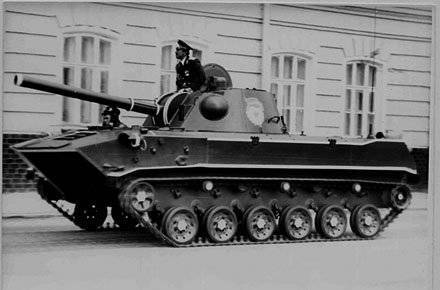
Production "Nona-S" was conducted by the plant. Lenin from 1979 to 1989 year inclusive. Total 1432 guns were released.
In 1981, the artillery system was put into service under the name “2 С9 self-propelled artillery gun”
At the end of 1981, it was decided to form a CAO 2 С9 battery and then send it to Afghanistan. It was formed in the city of Fergana, where six guns were escorted in advance, accompanied by two officers of the CAO 2 С9 104 division of the paratroopers regiment. Personnel - 3-I battery artillery division 345-th separate parachute regiment, which arrived from Afghanistan.
The training of the battery personnel continued for 20 days and ended with live firing at the training center. Used ammunition - 120-mm mines. The trainers were two officers from the CAO 2 С9 104 Division of the Parachute Regiment, who acquired good practical knowledge during all the tests and training of personnel. Subsequently, they entered the state of the battery. In late October, the battery went to Afghanistan.
Since 1982, the formation of the divisions of the CAO 2 С9 in artillery regiments began.
The 2 С9 – 1 “Waxworm” was developed on the basis of “Nona-S” specifically for the Marine Corps. It differed from “Nona-S” by the absence of mooring knots and increased ammunition to 40 shots.
Since 1981, the 2 С9 installation has been successfully used in Afghanistan. The effectiveness of the combat use of the system attracted the attention of the ground forces command, which wished to have a “Nona” in both towed and self-propelled versions.
Initially, the designers decided to call the towed version "Nona-B" by analogy with other artillery systems - self-propelled "Hyacinth-S" and towed "Hyacinth-B". But the name of the flower and the female name are not the same thing, and the customer categorically rejected the name “Nona-B”. As a result, the letter "B" was replaced with "K", and the towed version was called 2 B16 "Nona-K".
A few words about the 2 B16 device. The barrel of the towed gun is equipped with a powerful muzzle brake that absorbs up to 30% recoil energy. In a combat position, the wheels are hung out, and the gun rests on the pallet. In the battlefield, the weapon can be rolled by the forces of calculation using small rollers at the ends of the beds. According to the Nona-K staff, the GAZ-66 is being towed, but if necessary, the UAZ-469 can also be used. On the march the barrel folds together with the beds, and the gun takes on a very compact form.
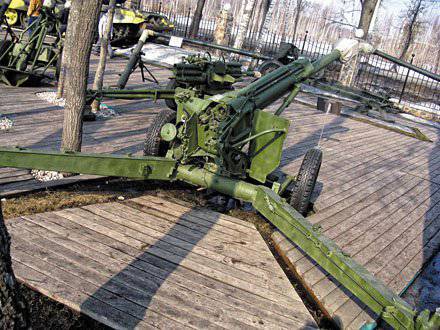
With 1985, the design bureau of the Perm Machine-Building Plant worked on the 120-mm self-propelled 2 С23 Nona-SVK. The gun itself has undergone modernization and received a new 2 A60 index, although its ballistics and ammunition remained unchanged.
One of the features of the locking mechanism of the shutter is a cylinder with a frame, which together act as a rammer. Thanks to this design, the loader does not need to spend significant efforts to send an artillery shot into the barrel bore, especially at high elevation angles when the gun barrel is raised vertically. The gun is equipped with a device that controls the temperature of the barrel (heat indicator), which is directly related to the accuracy of fire. The 2 A60 turret was mounted on the chassis of the BTR-80 armored personnel carrier.
On the roof of the commander's turret 2 С23 installed 7,62-mm PKT machine gun. The machine gun is connected to the TKN-3 A device, which allows for aimed shooting, remotely controlling the fire from the tower. Inside the 2 С23 there are two portable Igla-1 anti-aircraft complexes. On the right and left of the tower is the 902 B smoke screen installation system with six 3 D6 grenades.
The question arises, why it was necessary to create a new self-propelled gun, why it was impossible to adopt the Nonu-S ground forces? There were many reasons. Firstly, the “Nona-SVK” wheel travel provides greater mobility and reliability, especially when transporting equipment on its own over long distances.
In Afghanistan, 70 installations 2 С9 "Nona-S" operated. During the fighting, their 2 C9 running gear was often stoned, which made the car stationary.
The wheel system is devoid of this disadvantage. The 2 С23 has more ammunition and power reserve than the 2 С9. The 2 С23 is designed for ground forces where there is no BTR-D, but the BTR-80 is widely used, which makes it easy to repair vehicles and train personnel. Finally, 2 С23 in 1,5 – 2 is cheaper than 2 С9.
The first series of thirty 2 С23 was manufactured by Perm Machine-Building Plant. Lenin in 1990 g. In the same year, the gun was adopted.
All three "Nona" have a single ammunition and ballistics. This combination of ammunition, like the "Nona", was not and is not one of the artillery systems in the world.
First, “Nona” shoots all the usual 120-mm Soviet mines, including pre-war ones. Among them high-explosive
OF843 B, OF34, OF36, smoke 3 Д5, lighting С-843 and 2 С9, incendiary 3-З-2. The weight of the mines varies from 16 to 16,3 kg, so their ballistic data is approximately the same - the firing range is from 430 to 7150 m, and the initial speed is from 119 to 331 m / s. In flight, the mine stabilizes aerodynamically due to feathers (wings).
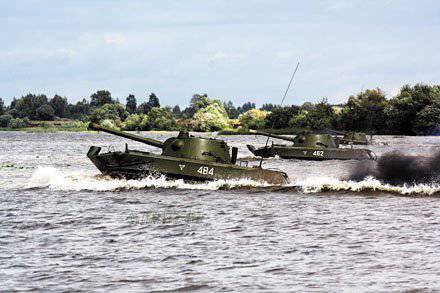
Fragment and high-explosive mines hit an area in excess of 2700 m 2. The burning mine 3-З-2 creates six fires, its components burn for at least a minute. The smoke mine creates a curtain over 10 m in height and over 200 m in length that smokes for at least 3,5 minutes.
Secondly, the “Nona” can shoot with ordinary artillery shells, the only difference of which is the ready-made cuts on the hull. OF49 and OF51 shells are arranged in the same way, only OF49 has a steel case and contains 4,9 kg of explosive А-IX-2, and ОФ51 has a cast iron case and 3,8 kg of explosive А-IX-2. By the effectiveness of these shells approaching 152-mm howitzer grenades. The firing range of OF49 and OF51 from 850 to 8850 m with initial speeds from 109 to 367 m / s. In flight, the shells are stabilized by rotation and their dispersion in 1,5 times less than that of mines.
In addition to the usual projectiles in the ammunition includes an active-missile projectile OFNUMX. This projectile has a miniature jet engine, which is activated through 50 – 10 seconds after the projectile is ejected from the barrel. The firing range of the active-missile - 13 km.
Thirdly, Nona can fire guided (“adjustable”) Kititol-2 projectiles that serve to hit lightly armored and other small targets with a probability 0,8 – 0,9. The projectile weighing 25 kg is equipped with powder engines that create corrective impulses during flight. The projectile is guided by a laser pointer. The firing range of the Kitolov-2 is up to 12 km. Explosive weight - 5,5 kg.
Fourthly, the Nona can successfully fight the main battle tanks at a distance of 1000 m. To do this, its ammunition includes a cumulative projectile weighing 13,2 kg, which pierces normal armor with a thickness greater than 650 mm.
Thus, “Nona” type guns have no equal in the world and can solve a wide range of tasks. These tools took part in a number of local conflicts and proved to be excellent.
A few words should be said about the use of "Nona-S" during the first Chechen war.
An eyewitness, V.Patkov, a correspondent for the newspaper Krasnaya Zvezda, described a characteristic episode in the combat use of self-propelled airborne artillery in Chechnya: “In the winter of 1996, in the Shatoi gorge, a column of paratroopers was ambushed. The militants have chosen the place for its organization very competently. Mountain road. On the left - a steep wall, on the right - the abyss. Having waited, when the part of a column was stretched because of a turn of a mountain ridge, fighters shot down the first car. Squeezed on a narrow string of road paratroopers, devoid of maneuver, according to all the canons of ambush actions were doomed.
In this situation, the senior column decided to use self-propelled artillery installations "Nona-S". Their ability to fire at an almost vertical trajectory, competent actions of the artillery spotter, Senior Lieutenant Andrei Kuzmenov, who was seriously wounded in that battle, made it possible to support the defenders with fire in the shortest possible time. This decided the outcome of the battle in favor of the paratroopers. Losses in that battle could not be avoided. But they could be much worse, do not disrupt the gunners of militants' plans for the complete destruction of the cut off part of the column. "
Major General A.V. Grekhnev, who was chief of artillery of the Airborne Forces from 1991 to 2002, told about the participation of Nona in the second Chechen war: “One of the best examples of the work of our gunners is that the battery commander self-propelled in Grozny of the artillery battalion of the Ryazan regiment of the 106 airborne division of Captain Alexander Silin. During the fierce battles for the city center, when, on foot, the battalion of Ryazan paratroopers fought off enemy attacks for several days in a row, being completely surrounded by militants, the outcome of the battle was largely predetermined by actions of the artillery adjusted by Captain Silin. Properly organizing and skillfully adjusting the fire of the regimental artillery at the lines and directions, Silin did not let the large enemy forces approach the buildings held by the paratroopers. For courage, heroism and professional actions during the street fighting in Grozny, Captain Alexander Silin was awarded the title Hero of Russia ...
The pause during the hostilities after the defeat of militants in Dagestan was fruitfully used by the Airborne Forces command to prepare the Airborne Forces grouping for a new large-scale campaign. One of the main activities of this training was just an increase in the artillery component. And when the troops crossed the border of the rebellious republic, each regimental tactical group was already in the artillery division, which had in its composition from 12 to 18 self-propelled artillery installations or D-30 guns ...
In addition to successful actions and good training of artillery of the Airborne Forces (this is evidenced by the fact that, going to the mountains, the reconnaissance units of the GRU and the FSB tried by all means to take with them precisely the landing art corrector), we should emphasize the courage and bravery of our gunners. ” .
In conclusion, it is worth mentioning the 120-mm 2 С31 “Vienna” self-propelled gun, the prototype of which was first demonstrated at the exhibition in Abu Dhabi in 1997.
The 2 СХNUMX self-propelled gun was created on the BMP-31 infantry fighting vehicle chassis and is intended primarily for fire support of motorized rifle battalions operating on the BMP-3.
The machine is made according to the layout with the aft arrangement of the engine compartment. The control compartment is located in the front of the case along its longitudinal axis. The fighting compartment with an armored turret with weapons installed in it occupies the middle part of the corps. The crew consists of four people, of which the driver is in the control department, and the installation commander, gunner and loader - in the fighting compartment.
The hull and tower of the machine are welded. Armor provides crew protection from small arms weapons and fragments of artillery shells and mines.
The 2 С31 self-propelled unit is equipped with an 120-mm 2 A80 rifled gun, the design of which is the development of the 2 A51 self-propelled 2 С9 gun. It also consists of a rifled barrel with a combined semi-automatic shutter, a cradle with a fence, anti-recoil devices and a sector lifting mechanism. A special feature of the 2 С31 installation tool is the increased length barrel, which made it possible to significantly increase the firing range when using 2 A51 ammunition. The gun is equipped with a pneumatic rammer and a system of forced purging of the bore after the shot. The vertical guidance of the weapon is carried out in the range of angles from –4 ° to + 80 °, and a tracking drive is used, which automatically restores the tip after each shot. In the horizontal plane pointing guns produced by turning the tower.
The 2 С31 self-propelled unit has a modern fire control system. The gunner has a periscopic sight and a separate sight for direct fire. Placed in the commander's turret to the right of the gun, the installation commander has an autonomous target designation system using his own means of observation and reconnaissance. The commander's turret can turn 90 ° and provides the commander with a good view ahead. The fire control system also includes navigation and topographic reference systems.
The full unit ammunition consists of 70 shots placed in mechanized combat packs. Shooting with the submission of shots from the ground is also possible. For this purpose, on the right side of the machine there is a hatch with an armored cover.
The auxiliary equipment of the self-propelled unit consists of a PKT 7,62-mm machine gun mounted on the roof of the commander's turret.
For the installation of smoke screens on the frontal armor of the turret, two blocks of twelve 81-mm grenade launchers of the 902 A type are mounted. Smoke grenades can be shot automatically by the command of the Shtora-2 laser radiation detector TSHU-1.
In 2005, the prototype of the 2 С31 Vena self-propelled gun was sent to state tests, which were successfully completed in 2007. And in 2010, Motovilikha Plants OJSC passed the first batch of 2 С31 Vena to the Ministry of Defense of the Russian Federation.
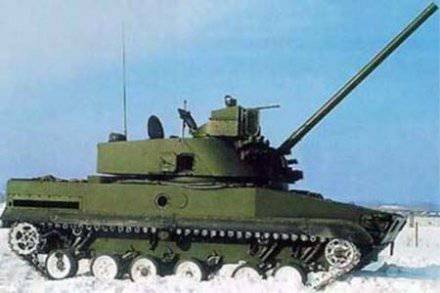
Information